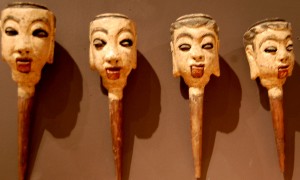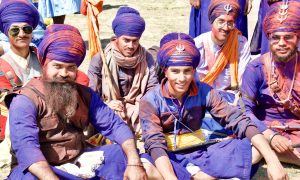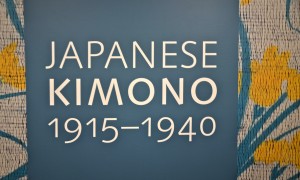What a visual treat to travel in a country where everyone looks like they are in a folk costume headed to a festival. In Bhutan, the National Dress is the norm and “formal” National attire is required in the Dzongs. There’s no such thing as casual Friday.
So, what does this mean?
The men wear a Gho, a bathrobe like garment, belted at the waist and worn with knee high socks and dress shoes.
I loved the detachable cuffs giving the wearer the option of having fresh white cuffs without having to wash the whole garment. Very attractive and practical.
I watched with eagerness to see what our guide, Sha, would wear. Over the two week trip, he donned several traditionally woven ghos, but he also had a striking and rather elegant black one with orange facings and trim on the inside. I loved the lilac one, also trimmed in orange. If you look closely you can see the orange along the front the Gho as well as the facing on the hem. He said it had been a recent gift from his wife.
Please note the gentleman who seems to be reaching into the front of his Gho. There was a pocket formed by the belt where the men could stash things–phones, water bottles, notebooks. It always amazed me to see what would come out of that fold in the fabric. Quite handy. 
Yep, remember, I’m a former fashion writer for a mid-market newspaper in the days when papers like ours had large and active Style sections. I can’t help myself. It is in my blood to notice clothing.
Men wear black socks and dress shoes when they go into a Dzong, but when we weren’t visiting one of the administrative and spiritual centers of an area, Sha wore simple black athletic shoes. More practical.
Here’s a photo of the king in his Gho wearing the more traditional footwear. We saw these in a museum and at the Festival in Paro. They made me think of Uggs—knee high and decorated.
Wearing a Kabney
Before I move on to the women’s attire, do notice the gold scarf that the king has on. It is the color of Royalty.
It’s called a Kabney—typically made of raw silk. The color determines the rank of the individual. Regular citizens wear white ones and are required to wear them in formal situations. Men in religious orders wear red. This made me think about turbans in India. They are indication of rank or location. Click here to learn more about that.
It was fun to have Sha demonstrate the elaborate wrapping process to get the Kabney to stay on.
Sometimes, when it got hot, our guides and drivers would take the top part of their Ghos off and roll/wrap around their waists, revealing Western style t shirts or casual wear under neath.
And this was the only “obvious” non Bhutanese man wearing a Gho that I saw during the two week trip organized by GeoEX. I took this photo of him at a Dzong, but the previous night we saw him at our hotel. I think he was a guide. I do wonder how he got into the Dzong where they require formal attire. I’m not sure his boots would qualify. And those socks look a little short to me. 🙂
The women wear a Kira.
These are long skirts made out of a huge rectangular piece of woven fabric. Some times it was pulled up and held at the shoulders with brooches. Over this goes a lovely jacket and a glittery pin to keep it closed. The ladies looked so elegant.
The combinations of colors and prints and textures are truly glorious. The Bhutanese love colors and beautiful weaving. For festivals and formal wear, embroidered scarves were added.
The children? They wear small versions of the adult dress, generally in fabrics indicating their schools. Gosh, I loved seeing them meandering the towns and streets.
I did pop into a store where they sell these garments in the capital city of Thimphu. It looked like this. I think the non-Bhutanese manikins are interesting. We were told that the culture of Bhutan is in transition. This is probably an example.
We were welcomed with a Khata.
One final mention about dress. We saw lots of Khatas or white ceremonial scarves. These are given in welcome, congratulations or good luck. One of my favorite authors, Linda Leaming in “Married to Bhutan” says, “They (khatas) are the Buddhist equivalent of a Hallmark card.”
Here’s a photo of our GeoEx group wearing our Welcoming Khatas.
The trip was organized by GeoEx. For more about Bhutan, please check out the previous blog posts on DesignDestinations.org
































Comments
2 CommentsMargaret
May 27, 2015Susan,
I, too, loved seeing the native costumes on the Bhutanese people…I thought about buying one of the jackets that the women wear but I’m trying to get away from compulsive buying when traveling…not sure I would have worn it much. Anyway, your Bhutan blogs are sure bringing back lots of great memories…thanks so much for sharing your knowledge, your photos, and your insights from your travels.
Susan J. Smith
May 27, 2015You are welcome. I am glad you are enjoying. I understand your temptation to buy one of the lovely jackets the women wear. So lovely.